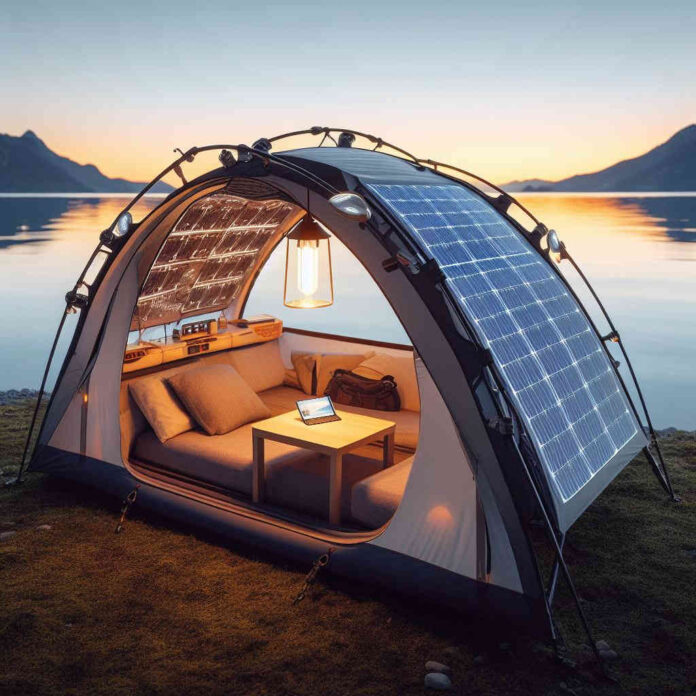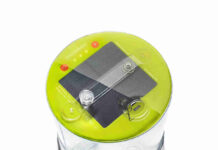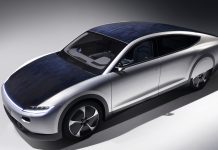
Solar Powered Trips a kind of next level
Things are slowly changing and expectations are growing fast, especially when it is about to personal comfort when go on trips. Being about sustainable living, eco-conscious choices are at the forefront, outdoor enthusiasts, and travelers are increasingly turning to solar energy in order to power their adventures.
For those who love the freedom of camping, integrating solar technology into their tent setup can be a game-changer. In this comprehensive guide, we will explore everything you need to know about embracing solar energy as a traveler with a tent, empowering you to go off-grid with confidence.
Being deep into the world of solar-powered camping, the sun isn’t just a companion in the sky but also your personal power source. In the following guide, we’ll walk you through the ins and outs of setting up a solar-powered campsite, making your outdoor adventures not only enjoyable but also eco-friendly.
Whether you’re a seasoned camper or a novice, this guide aims to simplify the process, providing you with all the information you need to embrace solar energy on your next trip into the wild.
Ways of selecting selecting the Right Solar Gear
Portable Solar Panels:
Efficiency Matters: When choosing portable solar panels, consider the efficiency of the technology. Monocrystalline panels are known for their high efficiency, ensuring you get the most out of the available sunlight.
Portability is Key: Opt for foldable panels. They’re not only easy to carry but also simple to set up at your campsite.
Solar Chargers:
Charging Versatility: Look for solar chargers with multiple USB ports. This feature allows you to charge various devices simultaneously, catering to the needs of your entire camping crew.
Built-in Battery: A solar charger with a built-in battery serves as a reliable energy storage solution, ensuring you have power even when the sun takes a break.
Speaking on Solar-Powered Tents options
Integrated Solar Panels:
Seamless Integration: Tents with integrated solar panels offer a streamlined approach to energy capture. It eliminates the need for additional setup and ensures that your energy source is always where you need it.
Pay Attention to Design: Choose a tent with a thoughtful design that maximizes sunlight exposure. It’s all about optimizing your energy intake without compromising the functionality of the tent itself.
Durability and Weather Resistance:
Weather-Ready Tents: Check for tents made from durable materials that can withstand various weather conditions. The last thing you want is your solar setup compromised by rain or wind.
Protecting Solar Components: Ensure that the solar components are well-protected. Look for tents with reinforced areas around the solar panels to prevent damage.
The time of Optimizing Sunlight Exposure
Proper Placement:
Sunlight Hotspots: Choose a campsite in an open area to maximize sunlight exposure. Avoid setting up camp under heavy tree cover or in areas with tall obstacles that could cast shadows on your solar panels.
Sun’s Daily Journey: Consider the sun’s path across the sky. Adjust your tent or portable panels throughout the day to capture sunlight from sunrise to sunset.
Adjustable Panels:
Follow the Sun: Portable solar panels often come with adjustable stands. Experiment with different angles to find the sweet spot for energy collection.
Track the Sun’s Movement: If possible, track the sun’s movement during the day. Small adjustments can make a big difference in the amount of energy you collect.
Consideration on Energy Storage Solutions
Power Banks:
Capacity Matters: Invest in a power bank with ample capacity. Higher capacity means more stored energy for your devices.
Quick Charging: Look for power banks with quick-charging capabilities. It’s a convenient feature when you need to top up your devices in a hurry.
Charge during the Day: Charge your power bank during peak sunlight hours to ensure it’s ready to keep your devices powered when the sun goes down.
Solar Generators:
Extended Power: For longer trips, consider a portable solar generator. These units provide a steady source of power and often come with multiple output options.
Device Compatibility: Check that the solar generator can power the devices you plan to bring. Some models even include built-in inverters for AC power.
Energy-Efficient Camping Gear needed
LED Lighting:
Bright and Efficient: LED camping lights are not only energy-efficient but also provide bright illumination. They are perfect for lighting up your campsite without draining your power source.
Adjustable Brightness: Opt for lights with adjustable brightness settings. This way, you can conserve power when full brightness isn’t necessary.
Solar-Powered Lanterns: Consider lanterns with built-in solar panels for a sustainable lighting solution.
Portable Appliances:
Efficiency First: Choose camping appliances designed for energy efficiency. Look for portable stoves and coolers that balance functionality with minimal power consumption.
Solar Gadgets: Explore innovative solar gadgets like ovens and water purifiers. They add functionality to your camp kitchen while leveraging the power of the sun.
Not to forget Environmental Considerations
Leave No Trace:
Respect Nature: When setting up your solar gear, be mindful of the local ecosystem. Leave no trace and minimize your impact on the environment.
Responsible Camping: Choose a campsite that aligns with responsible camping practices. Your goal is not just to enjoy nature but to preserve it for others.
Battery Disposal:
Environmental Responsibility: Dispose of batteries responsibly. Consider rechargeable batteries to reduce waste and minimize your environmental impact.
Long-Term Savings: Embracing rechargeable batteries may also save you money in the long run.
A kind of conclusion at the Solar Powered Trips
You’ve just navigated the world of solar-powered camping. By selecting the right solar gear, optimizing sunlight exposure, and embracing energy-efficient practices, you’re well on your way to a sustainable and enjoyable outdoor experience.
As you pack your solar essentials for your next adventure, remember that every sunbeam is not just lighting your path; it’s powering your journey in a way that’s kind to both you and the planet.



